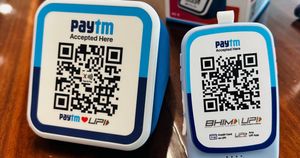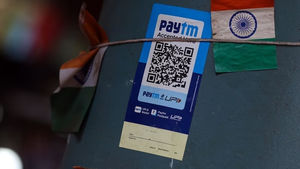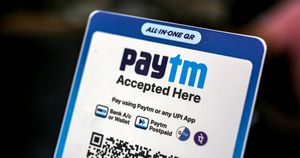
The RBI has ordered Paytm’s Payments Bank to hit pause on accepting fresh deposits in their accounts or wallets from March onwards. Since this news dropped, Paytm’s stock has taken a nosedive, and folks using Paytm are stressing over what’s gonna happen to their money. The uncertainty about Paytm’s future is intense.
Why Is Paytm in Trouble?
Back in March 2022, the RBI directed Paytm Payments Bank Ltd (PPBL) to cease accepting new customers due to compliance issues under Section 35A of the Banking Regulation Act, 1949.
RBI had rejected Paytm’s aggregator licence application in November last year and imposed a Rs 5.4 crore penalty in October 2023 for KYC non-compliance. Skip to January 31, 2024, and the RBI took additional measures against PPBL and directed the fintech giant to terminate its nodal account by February 29, 2024. This effectively halts almost all of Paytm’s core operations.
What is a Nodal Account?
A nodal account is a special type of current account mandated by the RBI for businesses that act as intermediaries, connecting customers to sellers. These accounts are designed to safeguard the interests of both customers and vendors by ensuring that funds are handled securely and transparently.
Think of a nodal account as a bank account which is a safe place for money. When you buy something online, the money goes here first. This safeguards you because the seller only gets the money after you confirm you’re satisfied. Similarly, the seller knows their money is safe until you receive your order.
What Happens Next?
Now, to survive this nightmare, Paytm must change their nodal account with another bank. However, it will not be easy, as setting up a nodal account usually takes about two to three months. Paytm had nearly 3 billion transactions in the previous December alone. So, they’ve got to locate a bank that can handle this volume of transactions, and all of this has to happen before the month ends.
However, this isn’t the sole issue on Paytm’s plate. Another concern is the merchant problem. Paytm works with roughly 37 million merchants who use Paytm Payment Bank to receive payments.
By month-end, Paytm needs to persuade all these millions of merchants to cease using their Paytm Payment Bank accounts and link a different bank account to their UPI address.
Additionally, there’s the potential need to update QR codes, implying Paytm has to issue new QR codes for all merchants and affix them to its sound boxes and cards wherever linked to Paytm Payment Bank.
What Does This Mean for Users?
Customers won’t face any financial loss in their Paytm Payment Bank accounts. Still, those relying on it for UPI transactions will need to find an alternative bank account to continue the service beyond February 29, 2024.
Fortunately, the RBI is actively formulating a rescue plan for Paytm users. Ongoing discussions include key stakeholders such as the National Highways Authority of India (NHAI), responsible for the FASTag service, and the National Payments Corporation of India (NPCI), overseeing the Unified Payment Interface infrastructure.
The objective is to facilitate a seamless transition for both merchants and consumers away from Paytm.















